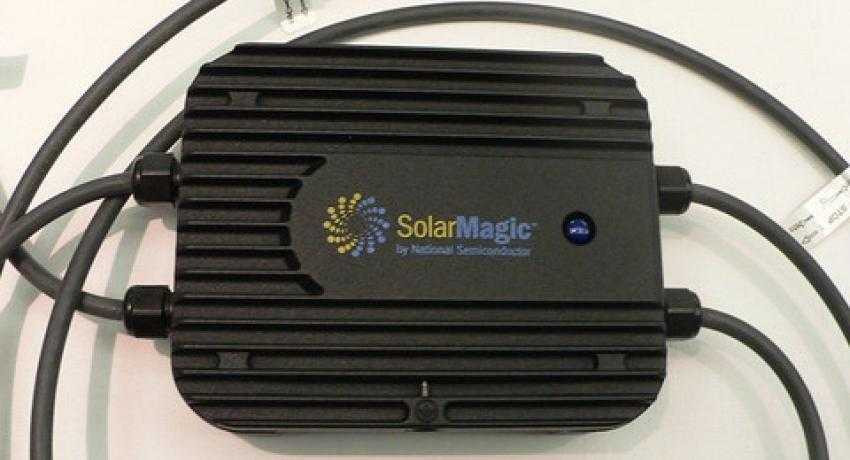Why do power optimizers for solar systems matter?
Relatively new to the solar marketplace are a new type of technology that helps boost efficiency and hence the output of solar PV systems. Power optimizers help condition the electricity produced by photovoltaic modules and by wind turbines. They act as sort of a DC to DC converter for each module and use maximum power point tracking (MMPT) technologies. MMPT measures the output of all the cells or PV modules in an array and applies the proper resistance or electric load to produce as much power as possible in an array. As such, power optimizers allow each panel in an array to produce as much power as possible and increase or decrease the module’s output voltage to match the amount of voltage requested by the inverter they’re tied to.
Photovoltaic modules put out power in direct relation to how much sun hits them. That means the power that comes from them fluctuates depending on how much sun is striking the module, which can make assuring that it’s a reliable source of predictable amounts of electricity is difficult. Furthermore it puts additional stress on the wiring and the system inverter, which converts the DC power produced by a module to more readily usable AC power, the type of power used in most household appliances. It’s also easier to transmit AC power over long-distance power lines.
While microinverters exist to convert the DC power from a PV module to AC power at the module level, the technology is usually a little more expensive than using a string inverter where 10s to 100s of PV modules are stringed or tied together to one inverter where MMPT is applied. But when that’s done, the inverter can’t maximize the power from each module and can its output is diminished by the lowest performing modules on a string.
Enter the power optimizer. The power optimizer is designed as a less expensive cousin than a microinverter. Like a microinverter a power optimizer can replace a module’s junction box, where it wires to other PV modules or the inverter, or it can be added on as an aftermarket piece of the system. The power optimizer can be added to each module in an array, or depending on the type of power optimizer, can be wired to a number of modules in an array to optimize the power from each of them. In arrangement a series of power optimizers will feed electricity to the array’s inverter or inverters depending on the system’s size. The inverter then converts the power to AC electricity for use in the home, business or before sending the power on the grid.




